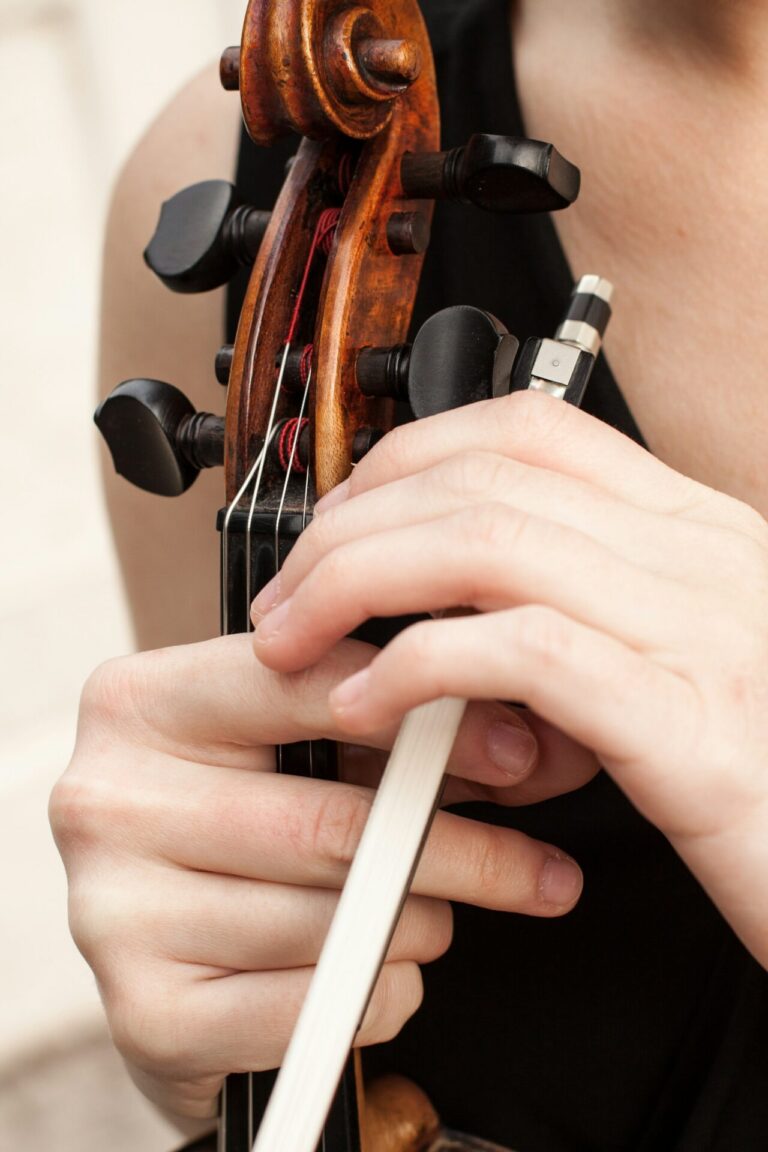Did you notice that different instruments start learning different scales? On the piano, we start learning everything in C-Major, on Flute can be considered to start at G-Major. How about the Violin? What are the first “beginner” Violin scales?
And that happens because of different instrument construction and playability, as the violin and viola don’t have frets on the fingerboard like guitars, the best way to find tuning is to start using finger patterns to help you map the notes.
The first two scales that we usually start learning on the violin are D-Major and A-Major, and it depends on the method you are using. In the Suzuki Method we start with A-Major, but in other String Methods like Essential Elements or All for Strings is common to start in D Major, as this helps put all stringed instruments in the same room.
Violin Fingerboard

To start learning our first scales, I like to visualize the “finger pattern” that will be used.
And for the violin or viola, the first finger pattern that we use is the one with the semi-tone between the 2nd and 3rd fingers.
A Major Scale

How to practice beginner violin scales
Suggestions for practice:
- Use a Metronome to keep your tempo steady
- Around 60 bpm is a good tempo to work
- Try keeping your bow in the middle soundpoint (between the bridge and the fingerboard)
- Explore gradually how to alternate long and shorter bows
- Play in different parts of the bow
- Try playing with a backing track in A Major
On my YouTube channel, I also have a video talking a little bit more about beginner scales practice.
Those scales are the first scales to appear in the Royal Conservatory of Music graded exams.
And most fiddle songs and major violin Concertos are built around those keys, for a reason!
Let me know in the comments below if you have any questions or suggestions
Check my resources page for more content to help your practice
See you soon
Andre.


